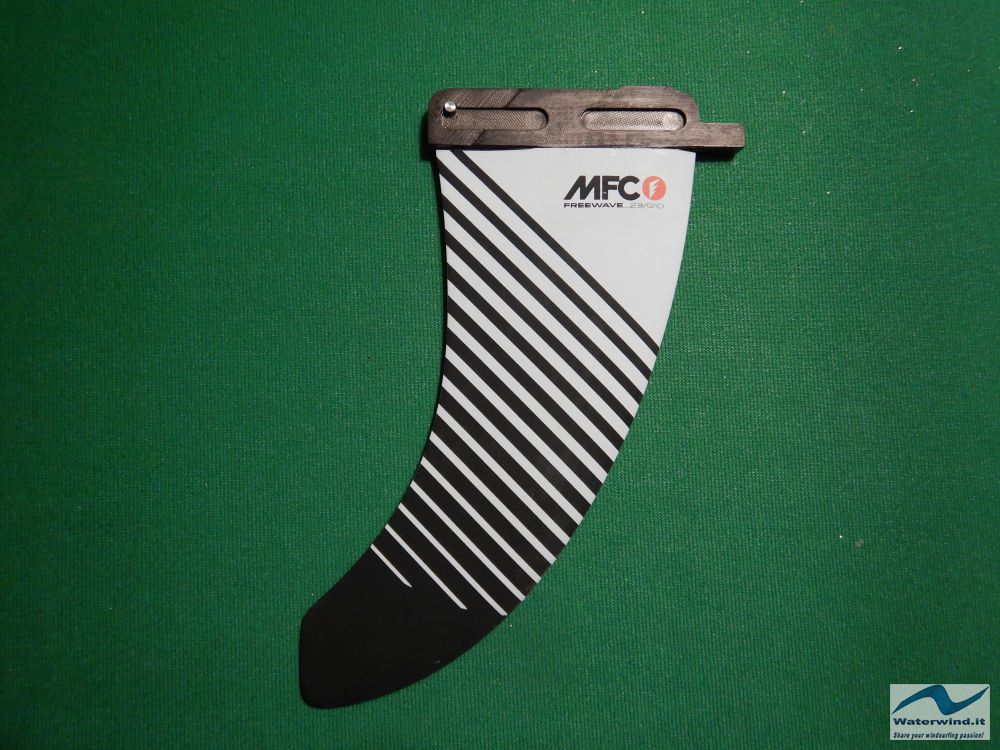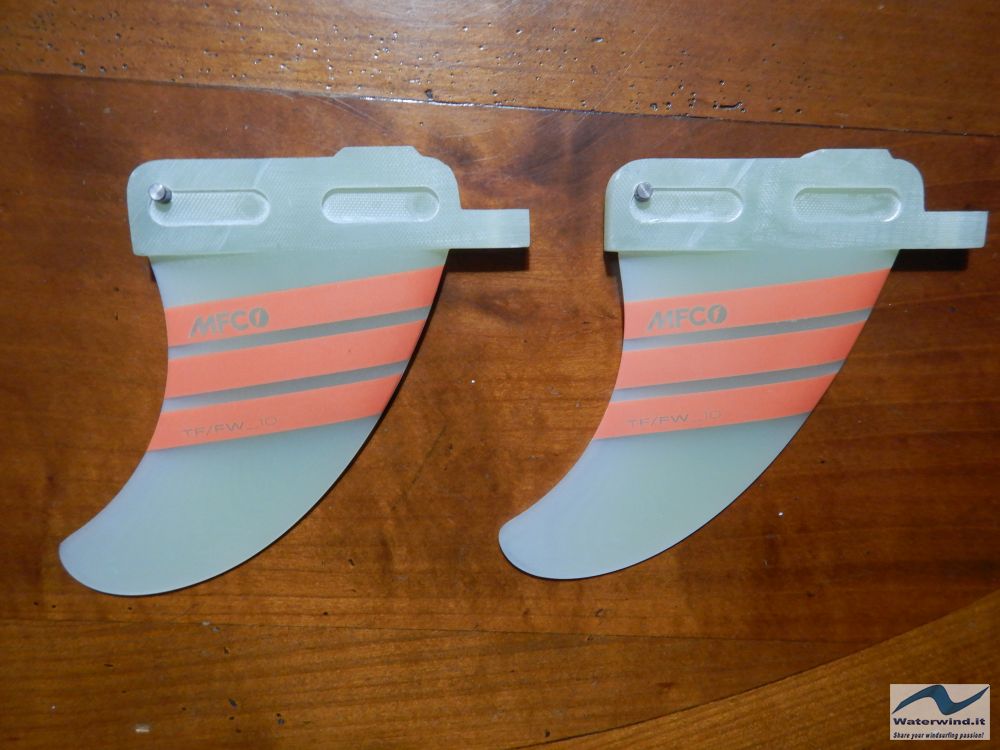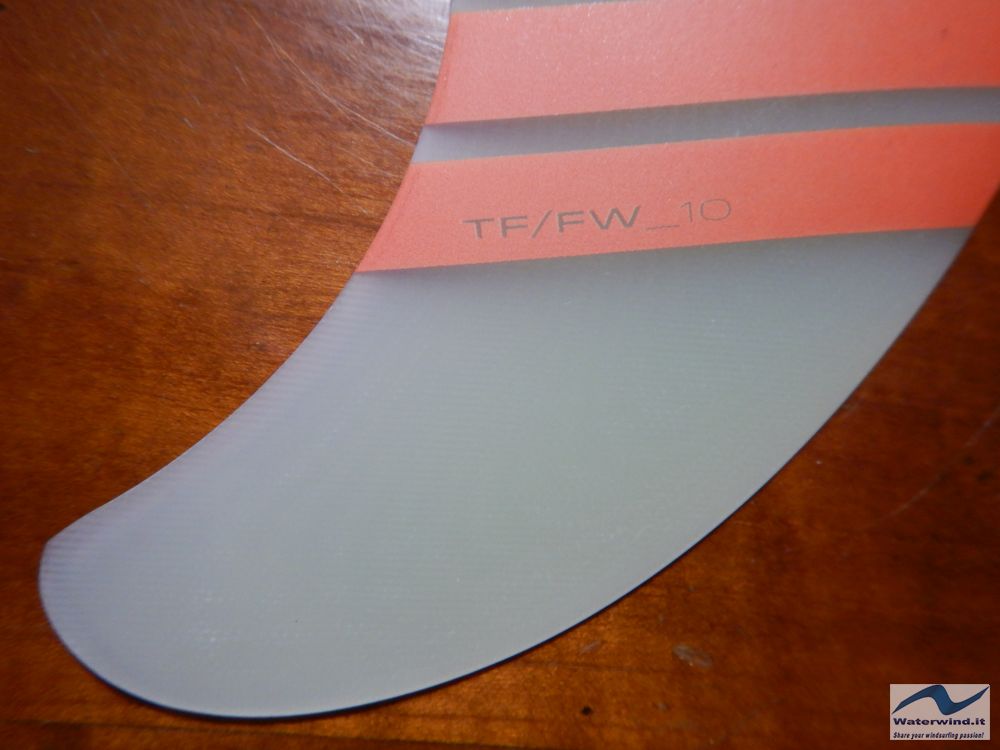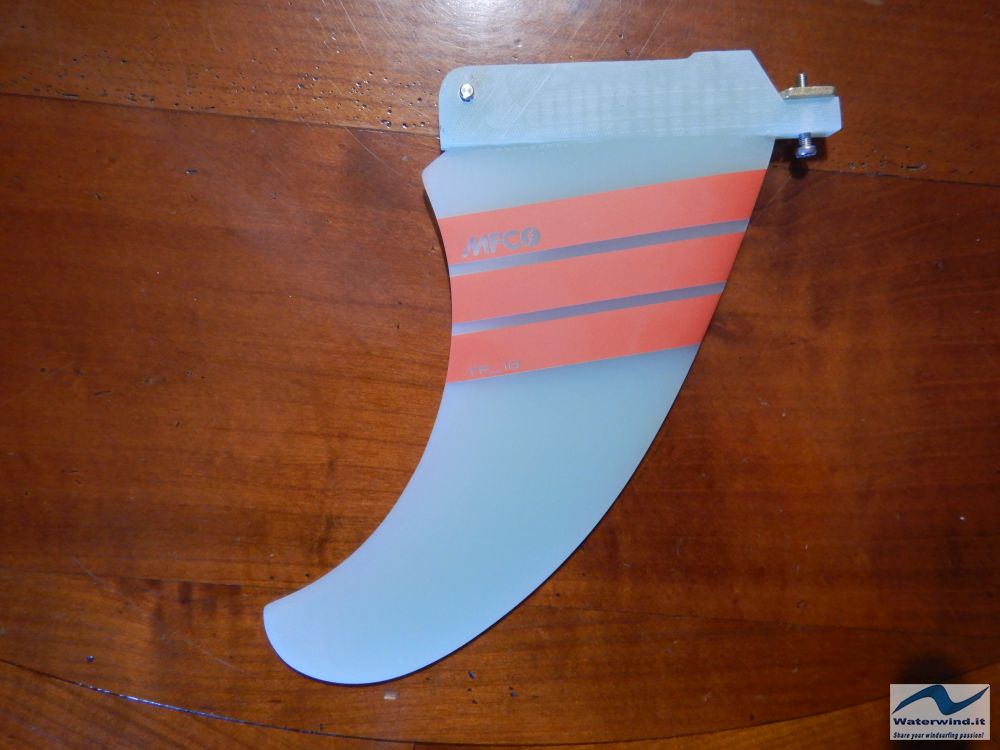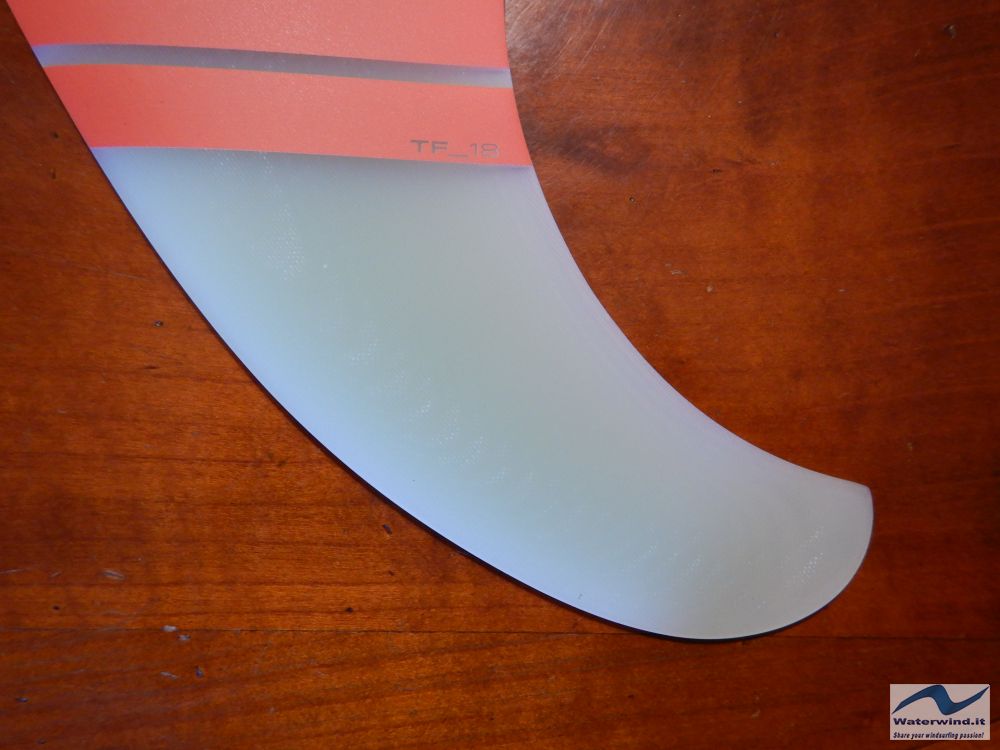The MFC windsurfing fins have long been among the best products on the market, both as for construction and for shape. In the last few months, we have tested several 2020 G-10 models, both for wave and freeride / bump and jump conditions. In this article, we summarize our impressions.
Windsurf, MFC fins test: Freewave, TF, TF/FW, K-One
MFC Freewave 23 (2020): used on Tabou Pocket 94 2016, for single fin set-up, in flat water or bump and jump conditions. It is a fin with a lot of drive, which makes the Pocket even faster (in itself, it is a very fast wave board), and enhances even more the qualities of early planing board. In this way, the board easily overcomes the wind lulls, if the wind is gusty, and makes the planing loss in the wind lows, less rapid. Ideal with sails on 5.3-4.7; at the limit of use with sail from 4.2, as the board starts to become hard under your feet. In these conditions, it is better to switch to a smaller fin (21), or a softer one (or to a different set of fins, among the waves).
MFC TF/FW 10 G-10 side (2020), used on Tabou Da Curve 80 2016, up to 4.7 size sail, and mainly in side on conditions, matching them with the central T-Lab Zinger 16 (original). Test spot: Sunset Beach, South Africa. The fins make the board fast, and further improve its upwind performance (and the Da Curve has good upwind performance), slightly penalizing its mobility in the waves. With this board, the K4 fins I own are better with stronger wind and sails size lower than 4.7, 'cause they make the board softer and more in control, with big waves.
MFC TF 18 G-10 central (2020), used on Tabou Pocket 94 2016, matching it with two side Zinger 11 T-Labs. Test spot: La Cinta San Teodoro, Sardinia. The Tabou Pocket is in itself an early planing board, and a very fast one. This set of fins gives the board a lot of lift and drive, and make it even faster. Under gusts, the modest reflex makes the board even quicker and more responsive. It is therefore a set of fins to be used in onshore wave conditions, or bump and jump sessions with wind intensity not exceeding 20 knots (for those like me - 70 kg, with sails not lower than 4.7).
MFC K One 27 G-10 (power box), used with Tabou 3s 106 2015 LTD, in single fin set-up. The size of this fin (27 cm) had led us to put it aside, in favor of the MFC freewave 25, fearing to obtain, otherwise, a board that was a little hard underfoot, and not very responsive. And instead, on the occasion of some light wind sessions, during which we used the board with a powerful Goya Banzai X-Pro 5.7 2019, we tried this fin seriously, and we fell in love with it!
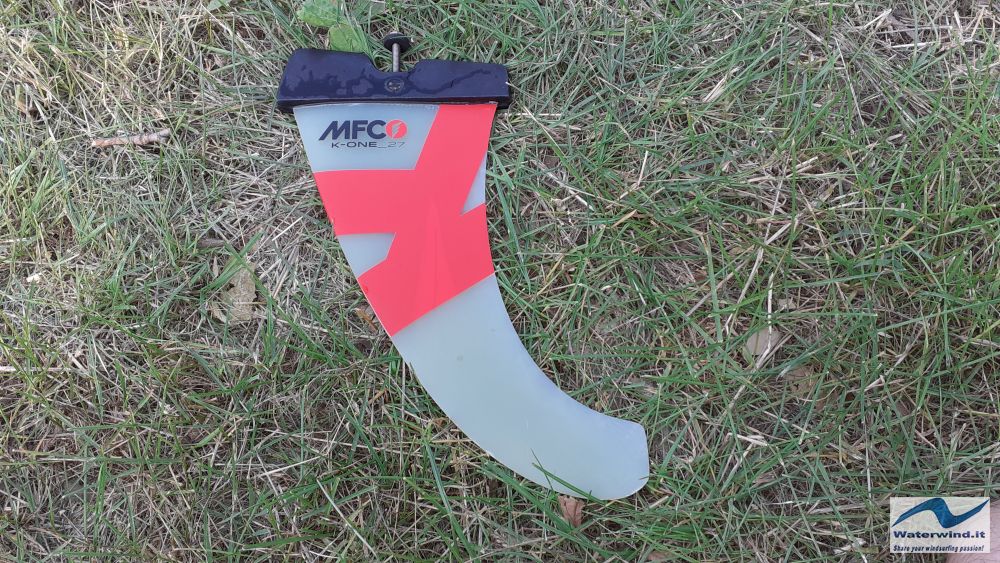
It is a truly balanced fin, which guarantees a good lift to the board, and ability to better sail upwind, thanks to its generous surface in the base chord area (upper part). But this fin leaves the board free to make precise and clear changes of direction, in case of waveriding in small waves, or in power jibe, thanks to the reduced surface in the tip area, and thanks to the shape, with a clear rearward bended profle. It is a fin to be used as a single fin, for onshore wave sessions (in the smaller sizes waves), or in bump and jump / freeriding sessions, in the larger sizes models, resulting, in such conditions, a really interesting product. More information on MFC website.
Good choice. Fabio Muriano
Also read the article with the results of the K4 fins tests.
Without your Support, Waterwind wouldn't exist. Become our supporter! If you want to advertise with us, read here, or contact us. Collaborate with us. Read here! Buy our Gadgets! Visit our YouTube channel!




